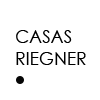QUIPÚ
QUIPU takes up the name of a recording device historically used by the Inca Empire, while symbolizing the struggle for subsistence endured by the people of Latin America. The works on view serve as powerful documents that speak of those who were hardly given a voice in Colombia’s official history. In Banderas Sucias (Dirty Flags) for instance, Sandoval gathers sacks, filthy bags and fragments of plastic that once belonged to displaced families, and transforms these into symbols of uncertain geographies. Resembling national emblems and signs of power, the flags become documents of sustained harm and tarnished dignity. In a similar manner, Sandoval’s Colcha de Mugre (Dirt Quilt) becomes a revision of the artist’s 12 de marzo de 1982, an installation consisting of dozens of newspapers dated March 12, 1982 covering an saturating an entire gallery space. Rather than using newspaper, in Colcha de Mugre, the space is covered with dirty sacks picked up in Cali’s Galeria Santa Elena, one of the city’s most traditional markets that has turned into one of the most critical centers of criminal activity. Besides referencing the market’s paradoxical activity, the woven sacks allude to the hard labor of the region’s peasants. Impregnated with the physical labor of peasants carrying the sacks on their backs, the installation attempts to remind the spectator how the body is affected when carrying excessive amounts of weight due to the necessity of earning the daily sustenance.
Sandoval’s QUIPU also features a new performance titled Toribío which will be presented at the gallery on Friday October 2nd. Outfitted with a pant and shirt impregnated with dirt gathered in the town of Toribío, the artist seeks to pay homage to the victims of this region, while using memory as an exhuming condition. By doing so, Sandoval will continue to add fragments to an overlooked historical account, centering on marginalized communities of Colombia. Sandoval’s QUIPU also features a new performance titled Toribío which will be presented at the gallery on Friday October 2nd. Outfitted with a pant and shirt impregnated with dirt gathered in the town of Toribío, the artist seeks to pay homage to the victims of this region, while using memory as an exhuming condition. By doing so, Sandoval will continue to add fragments to an overlooked historical account, centering on marginalized communities of Colombia.
Rosemberg Sandoval (1959) studied Fine Art at the Escuela de Bellas Artes and at the Universidad del Valle in Cali where he currently works as an Arts professor. Sandoval has participated in numerous exhibitions both locally and abroad in countries like Argentina, Ecuador, Venezuela, Spain, Switzerland, Italy and Czech Republic. His work can be found in collections like MoMA New York, Daros Switzerland and Museo de Arte del Banco de la República.








